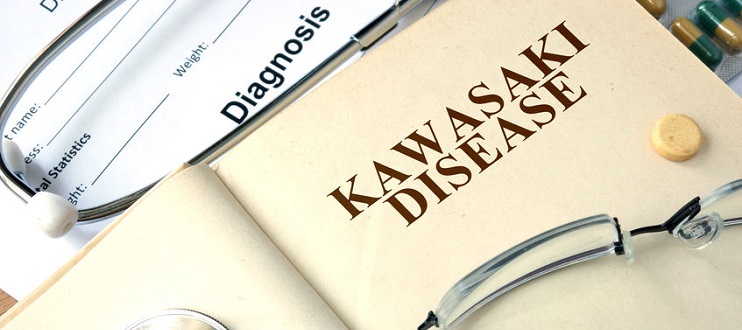

 Back to Suggested Publications
Back to Suggested Publications

The article we suggest this week "Infliximab Plus Intravenous Immunoglobulin (IVIG) Versus IVIG Alone as Initial Therapy in Children with Kawasaki Disease Presenting with Coronary Artery Lesions: Is Dual Therapy More Effective?" has been published recently on PIDJ
SUMMARY:
Kawasaki’s Disease (KD) is an acute vasculitis of unknown etiology, that primarily occurs in children under the age of 5 years. The primary blood vessels affected are the medium size arteries, most notably the coronary arteries, resulting in coronary artery lesion (CALs) in 25% of untreated patients. KD is now the leading cause of acquired heart disease in children. Standard therapy is treatment with intravenous immune globulin (IVIG) and aspirin, which reduce the risk of CALs from 25% to 5%. However, 10-38% of patients fail to respond or develop recrudescent fever and are at highest risk in developing coronary artery aneurysms and require additional therapy.
The authors previously demonstrated that 80% of children with KD, who develop CALs, have those lesions present at time of diagnosis, so the authors postulated that these patients likely represent a group that may benefit from more aggressive initial therapy.
Infliximab, a tumor necrosis factor (TNF) α antagonist, has been shown to be safe, well tolerated, and is used in some centers to treat IVIG resistant KD.
The authors show the results of their study, a single center retrospective study, in which they compared KD patients with CALs at initial presentation treated with standard therapy with those treated with standard therapy plus infliximab.
429 children admitted to Children’s Hospital Colorado, from January 2009 to July 2016 and diagnosed with KD, were eligible for the study. 69 patients were included because they had CALs present at time of diagnosis.
From 2009 - 2013, standard initial therapy for treatment of all patients with KD was IVIG and high dose aspirin. After 2013, KD patients, who had CALs at presentation, were treated with IVIG, high dose aspirin, and infliximab (5mg/kg as a single dose infused intravenously over 2 hours) as first line therapy. There were 34 KD patients with CALs treated with IVIG (IVIG alone group) and 35 KD patients with CALs treated with IVIG plus infliximab (IVIG plus infliximab group). All patients received aspirin. There were no differences in demographic, clinical, or laboratory characteristics between groups.
44% patients treated with IVIG alone (15/34) required additional therapy compared to 11% (4/35) patients treated with IVIG plus infliximab. Overall, the odds of needing a second treatment was 8.1 times higher in the IVIG alone group (p=0.003).
Of the 15 patients, who received initial therapy with IVIG alone, 9 received a second dose of IVIG and 6 received infliximab. Although not statistically significant, there was a trend towards shorter length of stay in the IVIG plus infliximab group.
There were no significant differences between treatment groups in hospital costs, fall in CRP 24 hours post treatment, nor in overall improvement of coronary artery z-scores at 2 and 6 weeks.
Although not statistically significant, there were more adverse events noted in the IVIG group.
The authors demonstrated that children with KD, who have CALs at diagnosis, have a high likelihood of IVIG resistance. They concluded that their study, although its limitations (retrospective nature, small sample ...), suggested that IVIG and aspirin plus infliximab, as initial therapy for KD patients with CALs, reduced the need for additional second line therapy, thus decreasing the number of patients who were IVIG resistant, with less adverse events.
AUTHORS: Jone PN, Anderson MS, Mulvahill MJ, Heizer H, Glodé MP, Dominguez SR.
Click here to go to the article.